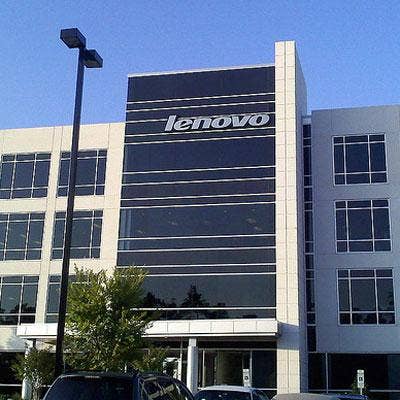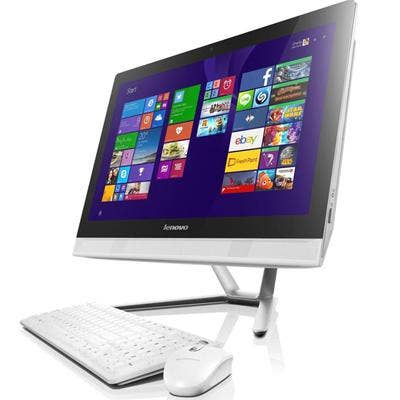CRN Exclusive: Lenovo's Kinlaw On Channel Program Changes, Cost Increases, CDW And The E-Tail Threat To Partners

Channel Changes At Lenovo
Lenovo North America Channel Chief Sammy Kinlaw says he understands the pain partners feel as the vendor reduces rebate levels on some PC lines in order to offset increasing SSD, memory and component costs while emphasizing other higher-end products and services.
"When I make a change like this, it upsets the environment," Kinlaw told CRN. "I'm going to own it. I understand that we've made some changes, but [partners are] going to have to change with us because everything is moving at a pretty fast pace."
While Kinlaw acknowledged the rebate reductions and other changes, he would not be specific about those adjustments. However, partners have told CRN that the restructuring could impact margins by between 30 and 50 percent.
Lenovo does about 90 percent of its business through the channel.
Partners expect the channel program changes to drive business to competitors like Dell Technologies and HP Inc., or could influence customers to buy direct.
Partners should instead double down on product lines that are seeing increased rebates, Kinlaw said, such as workstations, high-end PCs and also on services.
What follows is an edited excerpt of Kinlaw's conversation with CRN.

Partners are unnerved by what they say are some pretty deep cuts to their profitability within the Lenovo program via cuts to back-end rebates and on the distributor level. What's the rationale for the changes?
Let me give you some perspective from Lenovo and what we're currently faced with in the market and some of the dynamics that are happening in our route to reach end users today. We're still seeing continuing increased costs in terms of SSDs, in terms of memory, all the components that we need to build a PC. That structure is still being compressed, and that is a factor of our industry. Components from PCs are going to other places. What we're experiencing is supply and demand, and costs are not decreasing, they're increasing. We've held as best we could those costs because we know that our end-user expectation is to get more for less money, and that, frankly, has been the case for years and that really has changed this year. We're to a point where I'm seeing it from all my competition. OS cost increases that are pending and then component cost increases. If you're an end-user in the commercial space buying a PC, it's no surprise that costs are going up.

And rebates are going down?
How do we respond as a manufacturer that's going to be viable and have funding to continue investing in people and locations and coverage and in technology? We've had to look at all variables, and that includes anything that comprises controllable costs, or whatever makes up expense models. We took a step back and looked at all our design plans for programs. I would not say the changes we have made are drastic, but I will say we are making changes. We are making changes to pay more for things like workstation. We are making the opportunity available for partners who have specific capabilities and interests to grow verticals, and we're continuing to pay more for acquisition and breadth for distributors who can help us reach new markets and for our larger partners like CDW who can help us reach a new type of end user. So we've restructured somewhat.

So you're taking money out of rebates in order to offset increased component costs rather than raising pricing for customers?
Where we are making some programmatic changes is on how we go to market with larger CTOs or special bids. Are we going to be as aggressive as we need to be to win new business and working hand in hand with a business partner to go after a Fortune 500 customer? Yes. We are going to get to the right price to win, but we've also got to share in some of the pain of increased component cost. That's going to transition itself into lesser back-end monies in some of these opportunities, program-wise, not in cost to the customer.
What's the math?
We always have to be consistent. At the core of my business is maintaining a level playing field. I still want small VARs to be able to compete with large VAsR. I still want small [distributors] to be able to compete with large [distributors]. I will make specific investments with partners who have capabilities in these areas where I am most interested.

Can you be more specific about what's being reduced and by how much?
I don't want to be vague in any way, but I'm not going to lay out my programs for you to be able to publish where Dell and HP can read them. That would not be smart for me. I want to be open and honest with you, but at the same time I can't give you the line item of what it looks like.
Is it accurate to say there's less back-end money available to partners now in an attempt to offset component costs and less discounting ability for distributors?
That's a very loaded statement, and it wouldn't be entirely true because in other cases, I'm paying more. I'd say it's a restructuring of how we're using the monies because a factual statement is I am absolutely paying partners less on things like Chromebooks, but I have restructured that programmatic spend to pay more for things like workstation and services.

What do you say to partners that say this means Lenovo is going to take all this business direct?
I understand the pain that a programmatic change can cause. A partner looks at a manufacturer like Lenovo, who is channel-friendly, as a predictable, consistent and profitable program. When I make a change like this, it upsets the environment. I'm going to own it. I understand that we've made some changes, but [partners] are going to have to change with us because everything is moving at a pretty fast pace. It's moving in terms of cost increases. It's moving over commercial products, and the desire for commercial products to be sold in consumer markets and the consumer products to be sold to the commercial market. The e-tail community is on fire. E-tail is important to me, and it's growing, but I know where my bread is buttered, and it's with VARs, where Lenovo has its roots. Our VAR community needs to know how to compete with e-tail. That's where the value-add piece is going to become very important. End users are shopping in this growing world of e-tail.

What strategies are you advising partners to consider in order to meet the challenge head on?
I would highly encourage them to make sure they can fully articulate the value of premium-type products. Workstation is becoming a big piece of our business because, for example, STEM within education or higher-ed. Educators are using our workstations to teach students how to operate and use all types of software. With that is what's going on with design, what's going on with oil and gas, what's going on with production. That's all workstation-based activities. The price point of workstation has actually come down, which makes it like a higher-end desktop or higher-end mobile product. As the technology and the needs of software are driving us, they absolutely have to get on board with how to sell those types of technologies. Workstation is very, very important.

Are you driving partners toward PC-as-a-service offerings, as well?
It's become a reality. We've talked about as-a-service for years, and I see deals that close weekly as-a-service. Device-as-a-Service is here. PC-as-a-Service is happening. All of my major distributors now have DaaS offers. For the VAR community, they're going to have to know how to compete in this world. I would highly suggest that if they get with their Lenovo rep, their field rep, or one of my services reps to learn how they can partner with us in this market, because that's where they'll get left behind quickly if they're not up to speed.

How long do you component cost increases and pricing pressure persisting?
Everybody wants their crystal ball. We expect a similar environment to what we've been in at least through the close of the year and through the early parts of next year. It does read as if the environment will remain constant, which means pressure on components and costs.

When you come out the other side, will you return rebate levels and back-end dollars to where they were?
I want programs that enable growth and drive behavior and get partners to consider me. I do not want programs created that allow for cost-minus pricing. I think cost-minus pricing is not a healthy behavior and it masks the needs of what our end users require to close business. I would rather be more transparent in understanding the real cost to the end user that's needed to close the business rather than working within a model that's cost minus one, two, three. That's not healthy, and to be blunt, that's where we were going and I had to cost correct that.